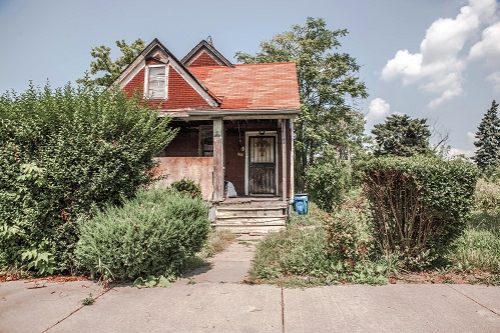What is HO-3 insurance?
An HO-3 is the standard homeowners insurance form and the most commonly purchased home insurance policy. It's also known as special form coverage. If you have an HO-3 policy, you have what is known as open perils or all perils coverage for the dwelling (your house).
Open perils means that the policy will cover any peril (something that could cause damage to your house, like fire) as long as it's not specifically excluded in the policy,
The personal property coverage on an HO-3 policy, however, is what's known as named perils. That means everything in your house is covered only for damage from a specific list of perils, and anything not listed isn't covered. Your personal property coverage may also be actual cash value rather than replacement cost, although this varies by company.
Actual cash value means property is replaced based on its replacement cost (what it would cost to buy new, today) minus depreciation. Replacement cost doesn't include any depreciation.
Read in detail about what is HO-3 insurance.
What is HO-5 homeowners insurance?
An HO-5 home insurance policy offers a higher level of coverage than an HO-3, and usually also has a higher premium as a result. It's also known as a comprehensive form policy.
An HO-5 policy has open perils coverage for both the dwelling and personal property. It also comes with higher personal property coverage limits for things like jewelry.
HO5 insurance doesn’t include everything. Like the HO-3 (and all home insurance policies) it excludes:
- Mold damage
- Earthquake
- Floods
When in doubt, ask the insurance company before you buy. Chances are, you may need to purchase flood or earthquake insurance in addition to homeowners coverage if you want that added protection.
An HO-5 home insurance policy includes replacement cost coverage for personal property, which is often an endorsement on an HO-3.
Know more about HO-5 homeowners insurance.
What is covered by both HO-3 and HO-5 insurance?
Both HO-3 and HO-5 home insurance policies include liability coverage, medical payments and additional living expenses (ALE).
Additional living expenses coverage helps you when you're temporarily not able to live in your home. The coverage, also called loss of use, can help with paying for hotel rooms, food and other living expenses during a covered claim.
Both HO-3 and HO-5 also have personal liability coverage. You get to choose the level of liability protection, which covers you if someone gets injured and you are responsible. Liability also covers legal costs and court damages if you're sued. Similarly, medical payments coverage provides a small payout to cover medical bills if someone is hurt on your property regardless of fault.
The standard home insurance policy includes $100,000 of liability coverage, but it's often wise to get at least $300,000 worth of protection.
What's the difference between HO-3 and HO-5 insurance?
The biggest difference between a HO-3 policy and a HO-5 policy is the level of coverage for personal property. HO-5 policies may also offer higher coverage limits overall, and are often aimed at high-value homes.
Open perils vs. named perils
As discussed above, there are two systems by which a policy outlines which perils are covered:
- Open peril. All perils are covered except those that are specifically excluded.
- Named perils. Only the perils listed on your policy are covered.
Open perils coverage offers more protection than named perils.
An HO-3 policy covers named perils for personal property and open perils for the dwelling and attached structures. Some companies may offer an open perils endorsement for personal property.
HO-5 insurance is open perils for both personal property and the dwelling.
A named perils policy covers the following:
- Fire or lightning
- Smoke
- Explosions
- Freezing
- Windstorm or hail
- Water or steam overflow or accidental discharge (such as from HVAC or plumbing)
- Theft
- Vandalism
- Riots
- Falling objects
- Weight of snow, sleet or ice
- Volcano eruptions
- Vehicles
- Aircraft
- Short circuits or artificial electric currents
- Sudden and/or accidental cracking, tearing, bulging or burning
As you can see, the coverage is still pretty comprehensive.
HO-3 vs HO-5
Here’s an overview of the difference between HO-3 and HO-5. Remember, an HO-5 insurance policy is more expensive than standard H-O3 coverage, but the extra cost may be well worth it in case of a claim.
Difference between HO-3 and HO-5 home insurance policies
| HO3 | HO5 | |
|---|---|---|
| Type of coverage | Special form (standard) | Comprehensive form (upgraded) |
| Cost | Less expensive | More expensive |
| Dwelling coverage | Open perils | Open perils |
| Personal property coverage | Named perils (limited coverage), endorsements may be required for higher-value items | Open perils (expanded coverage), the bulk of your personal property is included |
| Replacement cost | Actual cash value, replacement with endorsement | Replacement value |
| Requirements | Minimum required by most mortgage lenders | May have restrictions on which homes are eligible; usually newer and high-value homes |
Which homeowners insurance policy should you choose?
You may want to get insurance company quotes for an HO-3 policy and an HO-5 and weigh the price difference, taking into consideration any endorsements you need to add if you buy an HO-3. If you don't have a lot of high-value items and don't live in a high-value home, an HO-3 policy is probably a good choice.
But if you have a lot of high-value property, such as jewelry or art, and need expanded coverage, consider an HO-5.
Ultimately, the right policy is a balance of the coverage you need and the price you want to pay for your home insurance.




